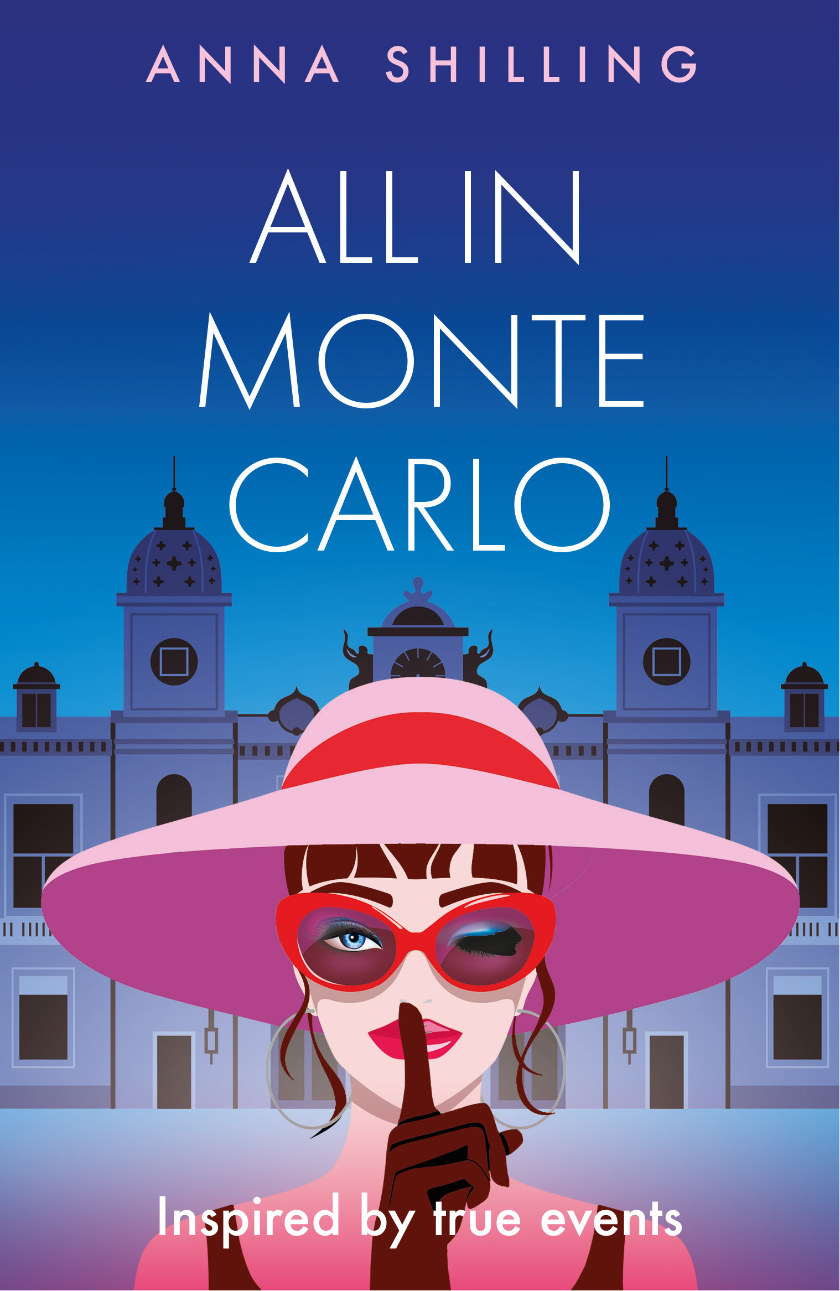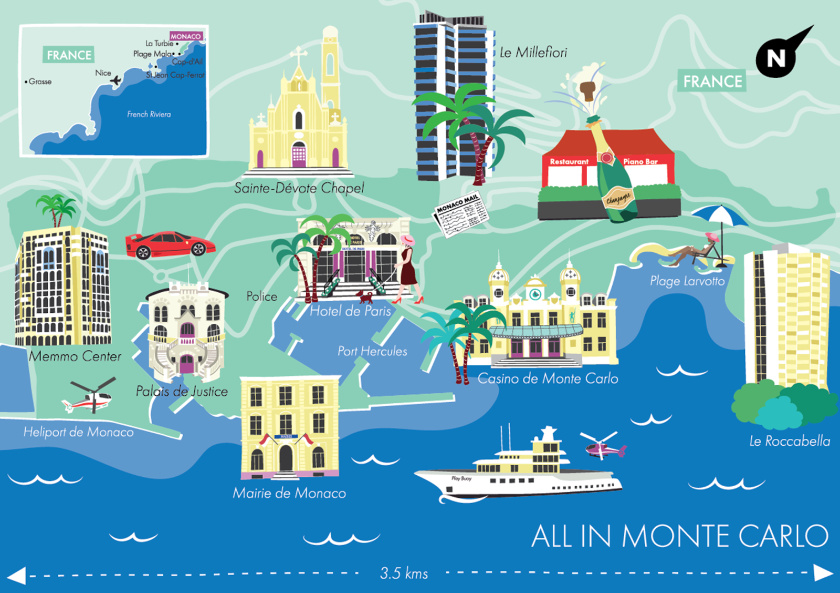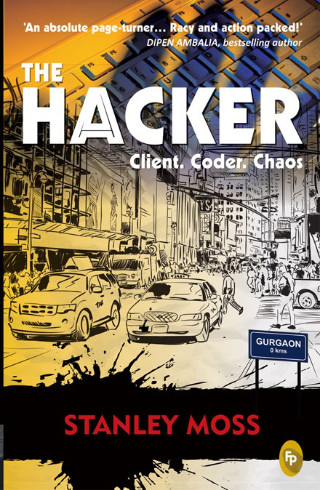
LIVING Anna Shilling’s All in Monte Carlo spins a high-stakes tale through the eyes of four women, founded in the very real lives of those who inhabit the quarter in Monaco. We review it
Main photograph by Shan Tomouk/@shantomouk


The cover to All in Monte Carlo, and a map of where the action takes place, all within an area measuring 3·5 km across
The image of the jet-set Principality of Monaco is still very much with us: those of us who flock there are swayed by the magnetism from its decades as the destination of the rich; and the history of its ruling house which takes its name from Francesco Grimaldi with agnatic heirs from other families. And then there are those who live and work in Monaco every day, some who themselves have been drawn there, who have real-life tales to tell.
That’s where All in Monte Carlo begins, from the points de vue of four women, whose paths cross in the principality and specifically in Monte Carlo, each of whom has a motive to seek revenge from the situations in which they find themselves. A magazine editor, a countess, an escort, and a businesswoman, with a backdrop not just of Monaco but the high-stakes art world.
Anna Shilling—in fact the nom de plume of four women, whose identities are jealously guarded (in fact Lucire only knows of one)—weaves a tale of brand names and conspicuous consumption, in line with the boutiques we all witness in Monaco, and paints a colourful back story for each of the four main characters. They are grounded in reality, with sufficient embellishment to raise them into fiction. Of the worlds we know, the editor’s tasks are all too believable—who hasn’t written puff pieces(?)—but money-laundering and Russian mobsters are outside our immediate experience, though we have written on similar subjects over the decades.
Those who have travelled to that part of the world will know the locations well, and Shilling covers them realistically. There’s the depth of detail into brands and products that are clearly the work of an observant, clever journalist—certain Fleming thrillers come to mind given this background—though the way the revenge is sought borders on black comedy in some cases. In other words, rather enjoyably, with an admitted inspiration in Dumas’ The Count of Monte Cristo.
It is also a colourful travelogue, in much the same way as our travel editor Stanley Moss’s novels in India, but far more grounded in actual events—as Shilling has said in publicity statements, the truth is stranger than fiction. Knowing many tales ourselves, this mantra certainly holds true.
The authors are described as an editor, an aristocrat, a high-net-worth businesswoman and a private banker—women who know the very people who appear in the novel—or on whose lives they are based. All four are expatriates.
As they explained, ‘We are a group of friends who all lived in Monaco and socialized together under the guise of a “book club”. Having entertained each other with anecdotes of what really goes on in Monte Carlo, the idea to write a book was born. The magazine editor in our group created the master plot of betrayal and revenge, to which we all brought our real-life stories. We wanted to lift the lid on Monaco from an insider’s perspective: from outrageous secrets to funny experiences of our daily lives in the second smallest country in the world but the wealthiest per capita.’
From the cover—designed by Patrick Knowles, who has illustrated covers and provided calligraphy for Julian Fellowes, Anthony Horowitz, Joyce Porter, Colin Watson, and Their Royal Highnesses the Prince and Princess of Wales—through its c. 300 pp., All in Monte Carlo is a perfect read for our times, a snapshot of the Riviera as it stands in the early 2020s, with one exception, viz. that the pandemic is absent, although it was the pandemic that brought the authors together. But the places (all of which exist in real life), food and money are there, in rich verisimilitude, along with Shilling’s descriptions of the action. Thoroughly recommended, and just the ticket for our readers. It leaves the door open for a sequel, and we think it deserves one—not to mention, given its cinematric approach to storytelling, a screen adaptation. •
Related articles hand-picked by our editors

What if there was a cancer drug breakthrough?
Physician Mary Austin tells a story about a miraculous cancer drug—which is then suppressed by Big Pharma. Jack Yan interviews her about her book, The Last Rose of Summer
Photographed by Elīna Arāja/Pexels

It’s real life: conquering body image issues
Alli Spotts-De Lazzer’s MeaningFull is not only founded on a qualified therapist’s knowledge, but first-hand accounts of people who have dealt with dieting, weight and body image issues, and come out the other side having beaten them
Photographed by Drop the Label Movement
 The Hacker
The Hacker
Have we a tale for you, serialized over the upcoming weeks. In the novel The Hacker, by travel editor Stanley Moss, all hell breaks loose at a struggling young Gurgaon-based software firm when Shaitan Vikram, one of its ex-employees and a psychopath hacker, swears to revenge his legitimate but ill-timed dismissal from the company rolls
Prologue |
Chapters 1–4 | 5–8 | 9–12 | 13–16 | 17–20 | 21–2